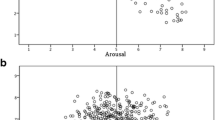Abstract
Stochastic resonance phenomenon in the biological sensory systems has been studied through the signal detection theories and the psychophysical experiments. In this paper, sensory systems are considered as a threshold detector including the receiver part and the classifier part. Compared with conventional models regarding the receiver part of sensory system as a linear or single non-linear system, a summing network was constructed by MacCulloch-Pitts neurons to simulate the receiver part. The simulation results show that the relevant index of the detectability of signal exhibit the stochastic resonance behaviours. The psychophysical experiments were carried out through the 2IFC (two interval two alternative forced choice) method. The experimental results qualitatively verify the conclusion in accordance with the theoretical model. These works give a proof that stochastic resonance is not only epiphenonmenon in sensory systems.
Similar content being viewed by others
References
Gingl Z, Kiss L B, Moss F. Non-dynamical stochastic resonance-theory and experiment with white and arbitrarily colored noise. Europhys Lett, 1995, 29: 191–196.
Bulsara A, Jacobs E, Zhou T, et al. Stochastic resonance in a single neuron model: theory and analog simulation. J Theor Biol, 1991, 152(4): 531–555.
Pei X, Bachmann K, Moss F. The detection threshold, noise and stochastic resonance in the Fitzhugh-Nagumo neuron model. Phys Lett A, 1995, 206: 61–65.
Collins J J, Imhoff T T, Grigg P. Noise-enhanced tactile sensation. Nature, 1996, 383(6603): 770.
Collins J J, Priplata A A, Gravelle D C, et al. Noise-enhanced human sensorimotor function. IEEE Engineering in Medicine and Biology Magazine, 2003, 22 (2): 76–83.
Tougaard J. Stochastic resonance and signal detection in an energy detector-implications for biological receptor systems. Biol Cybern, 2000, 83: 471–480.
Tougaard J. Signal detection theory, detectability and stochastic resonance effects. Biol Cybern, 2000, 87: 79–90.
Gong Y F, Marrhews N, Qian N. Model for stochastic-resonance-type behavior in sensory perception. Phy Rew E, 2000, 65(3): 031904, 1–5.
Ward L M, Neiman A, Moss F. Stochastic resonance in psychophysics and in animal behavior. Biol Cybern, 2002, 87: 91–101.
Green D M, Swets J A. Signal Detection Theory and Psychophysics (2nd Edition). Peninsula Publishing P. O. Box 867, Los Altos, California, 1988.
Simpson A J, Fitter J. What is the best index of detectability?. Psychol Bull, 1973, 80: 481–488.
Zwislocki J J, Relkin E M. On a psychophysical transformed-rule up and down method converging on a 75 % level of correct responses. Proceeding of the National Academy of Sciences of the United States of America, 2001, 98 (8): 4811–4814.
Author information
Authors and Affiliations
Corresponding author
Rights and permissions
About this article
Cite this article
Liu, J., Li, G. Positive Effect of Noises on Sensory Systems. J Bionic Eng 1, 61–65 (2004). https://doi.org/10.1007/BF03399455
Accepted:
Published:
Issue Date:
DOI: https://doi.org/10.1007/BF03399455




